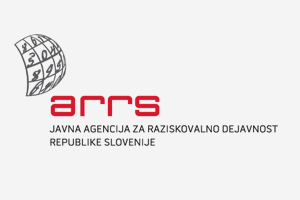Warehousing 4.0 – Integration model of robotics and warehouse order-picking systems
Project name: Warehousing 4.0 – Integration model of robotics and warehouse order-picking systems
Project Client: ARRS, Public Agency of the Republic of Slovenia for Research
Time frame: 1. 9. 2020 – 31. 8. 2023
Project coordinator: University of Maribor, Faculty of Logistics
Participating organizations: University of Ljubljana, Faculty of mechanical engineering, ETRA Ltd.
A brief summary of the project:
Automated and robotized warehouses have proven to be a potential area for lowering operating costs, raising productivity, work humanization, and improving environment and resource management, especially from the system point of view.
The increasing trend of the e-commerce and the increasing customer expectations in terms of speed, reliability and flexibility of services has a significant impact on the demand for effective order fulfilment (order-picking, consolidation and delivery of shipments) in modern warehouses. Many companies integrate their warehouses by using robotization (service and mobile collaborative robots) to support the process of warehousing and order-picking to fully meet the increasing trend in speed, reliability and flexibility of their services, and the emerging concept of minimal orders (Batch size 1).
The recent advancement of automation and robotization of transport and warehouse technology enables the application of many new technologies to increase the efficiency of warehousing activities, such as Automatic identification with RFID technology, the application of computer and machine vision, the application of robotization and autonomous vehicles for order-picking, the application of collaborative mobile robots, the application of a specially designed workplace with a collaborative robot known as Operator 4.0, etc.
Warehouse designers and warehouse managers are thus confronted with many of new techniques and technologies for the application in modern warehouses. This has a significant impact on the appropriate (best) selection of these new technologies in terms of achieving maximum capacity and throughput performance, high reliability and flexibility, high sustainability and good ergonomics and, last but not least, the cost-effectiveness of the warehouse. The main goal of the applied research project is to integrate the warehousing and order-picking by using service and collaborative mobile robots into an expert system. This expert system will allow computer-aided, professional and optimal selection of modern transport and storage systems along with the comparison of different subsystems for achieving the maximal performance of order fulfilment while ensuring the economy and sustainability of the warehouse operation. The expert system will be based on analytical and numerical modelling, discrete multi-object optimization, and the development of an innovative model of warehousing and order-picking by using robots. The goal of the project is also a userfriendly and upgradeable implementation of the expert system, which will enable its
widespread use in the design of warehouses and its modernization when new technologies emerge. The integration model will be a lever for the penetration of new knowledge/skills in research environments, industrial development environment and directly into industry. This knowledge is essential for the development of intelligent warehouses (Warehousing 4.0) as the basis of smart factories (Factory of the Future), which are considered to be a new research direction. In future, only smart warehouses will be able to connect supply chains that contribute to economic growth, human-friendly work environment and sustainable economic development. The proposed innovative expert system with a clear concept and ambitious goals will determine the ways of integrating concepts of warehousing and robotization (especially the application of collaborating robots) into the field intralogistics and will thus define guidelines for the application of new warehouse order-picking technologies.

